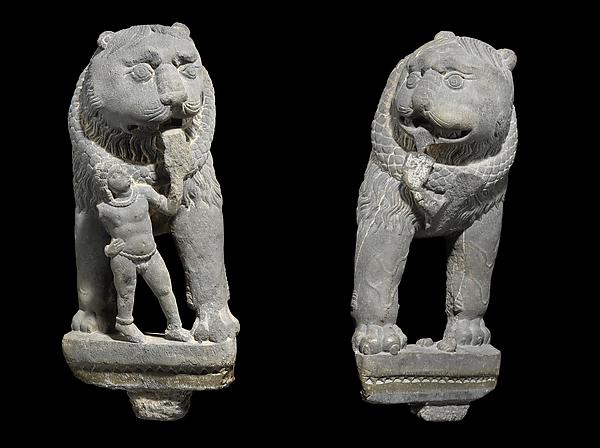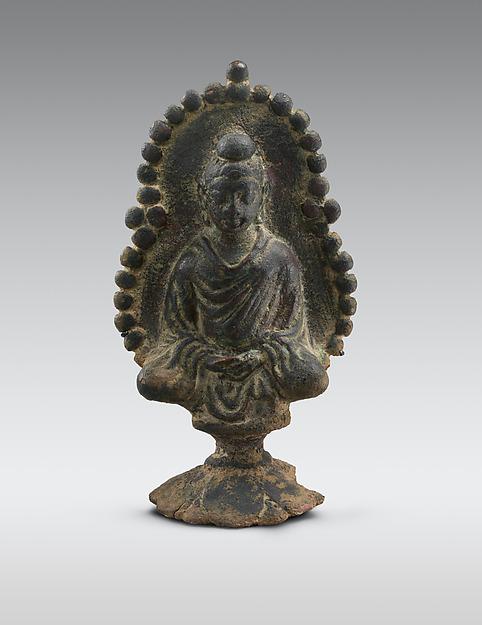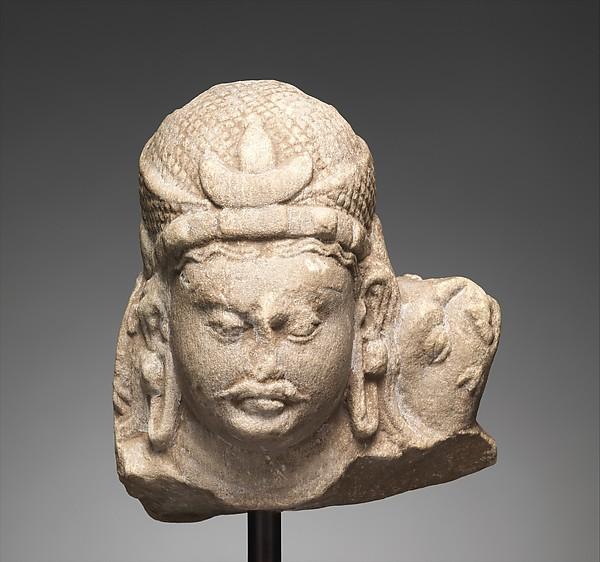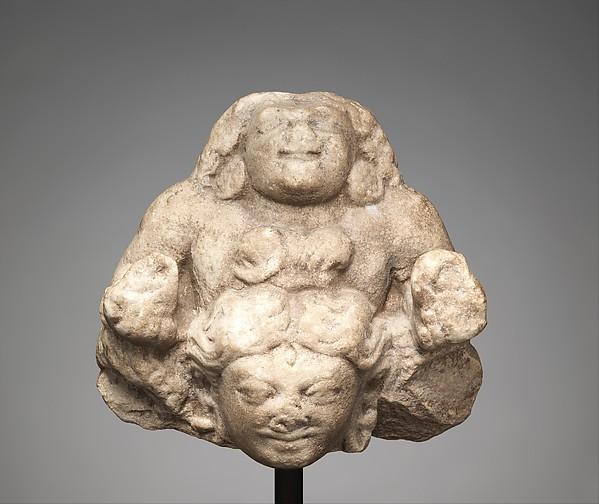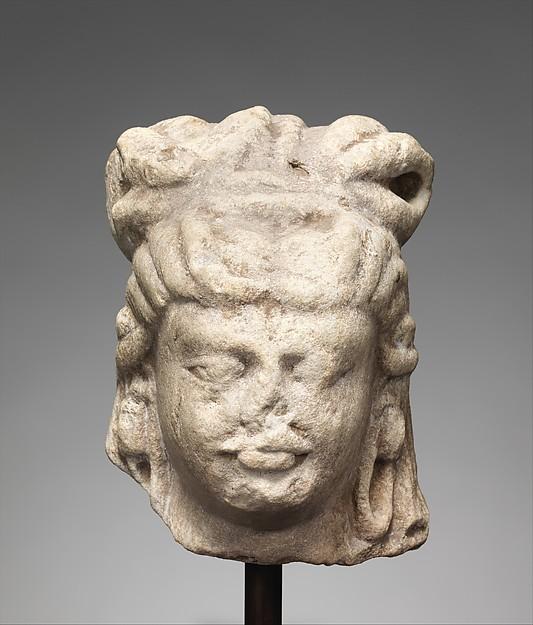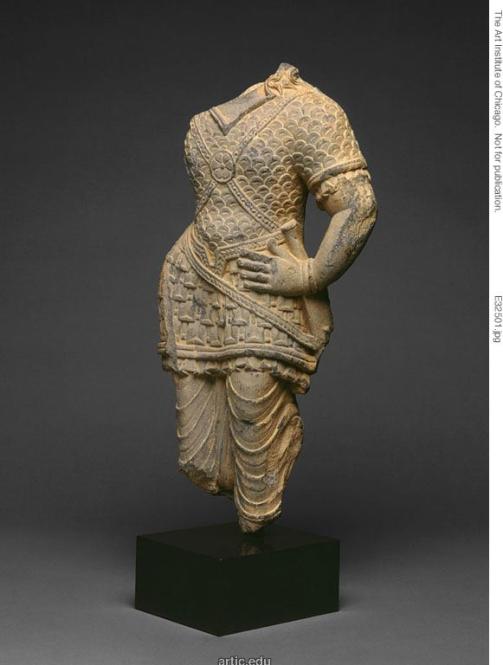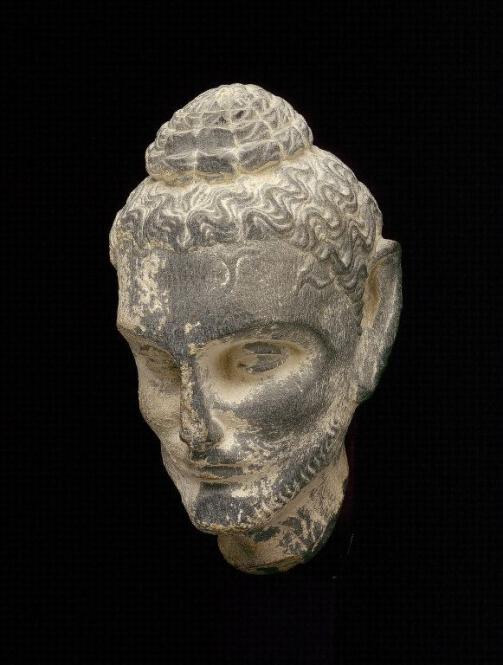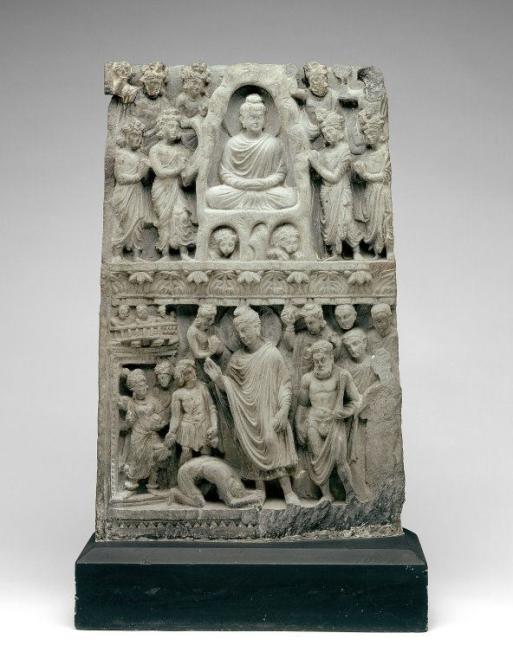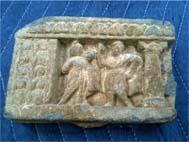2015.500.4.1
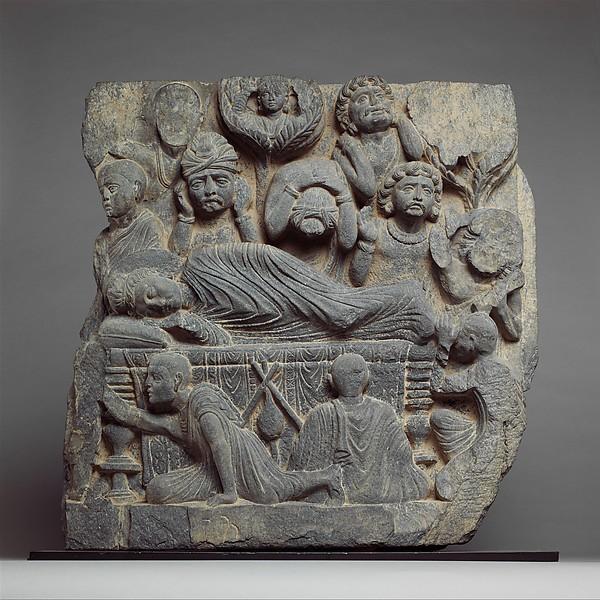
Object Title
The Death of the Buddha (Parinirvana)
Measurements
H. 26 in. (66 cm); W. 26 in. (66 cm); D. 3 in. (7.6 cm)
Creation Date
ca. 3rd century, Kushan period
Credit Line
Gift of Florence and Herbert Irving, 2015
Museum Name
Culture
Country of Origin
Object Type
Materials / Techniques
Object URL
http://www.metmuseum.org/art/collection/search/38452
Provenance Information
In the collection of Christian Humann (Pan-Asian Collection), New York, by 1977 until his death in 1982; Sold to Robert H. Ellsworth, New York, as estate sale in 1982; Purchased by Alice Boney, New York, from Ellsworth, by 1984; Sold to Herbert and Florence Irving, New York, in 1984; Collection of Florence and Herbert Irving from 1984 through 2015; Gift of Florence and Herbert Irving to The Metropolitan Museum of Art in 2015.
Exhibition Information
On view continuously since 1994 in the Florence and Herbert Irving Galleries for the Arts of South and Southeast Asia at The Metropolitan Museum of Art.
Los Angeles. Los Angeles County Museum of Art. “The Sensuous Immortals”, October 25, 1977–January 16, 1978. Additional venues: Seattle. Seattle Art Museum, March 9, 1978–April 23, 1978. Denver. Denver Art Museum, May 26, 1978–July 30, 1978. Kansas City. William Rockhill Nelson Gallery, September 13, 1978–October 29, 1978.
Los Angeles. Los Angeles County Museum of Art. “The Sensuous Immortals”, October 25, 1977–January 16, 1978. Additional venues: Seattle. Seattle Art Museum, March 9, 1978–April 23, 1978. Denver. Denver Art Museum, May 26, 1978–July 30, 1978. Kansas City. William Rockhill Nelson Gallery, September 13, 1978–October 29, 1978.
Publication Information
Behrendt, Kurt A. The Art of Gandhara in The Metropolitan Museum of Art. New York : Metropolitan Museum of Art ; New Haven: Yale University Press, 2007, pp. 39–41.
Pal, Pratapaditya. The Sensuous Immortals: A Selection of Sculptures from the Pan-Asian Collection. Exh. cat. Los Angeles : Los Angeles County Museum of Art ; Cambridge, Mass.: distributed by the MIT Press, [1977], pp. 32-33.
Published on The Metropolitan Museum of Art’s online collection database (http://www.metmuseum.org/art/collection) as of July 2015.
Pal, Pratapaditya. The Sensuous Immortals: A Selection of Sculptures from the Pan-Asian Collection. Exh. cat. Los Angeles : Los Angeles County Museum of Art ; Cambridge, Mass.: distributed by the MIT Press, [1977], pp. 32-33.
Published on The Metropolitan Museum of Art’s online collection database (http://www.metmuseum.org/art/collection) as of July 2015.
Section of the AAMD Guidelines relied upon for the exception to 1970
Gift or bequest expected or on loan prior to 2008
Explain why the object fits the exception set forth above
The relief panel has been exhibited and published as early as 1977. It has been on loan at The Metropolitan Museum of Art since 1993. It has also been on display in the Florence and Herbert Irving Galleries for the Arts of South and Southeast Asian Art since 1994.
